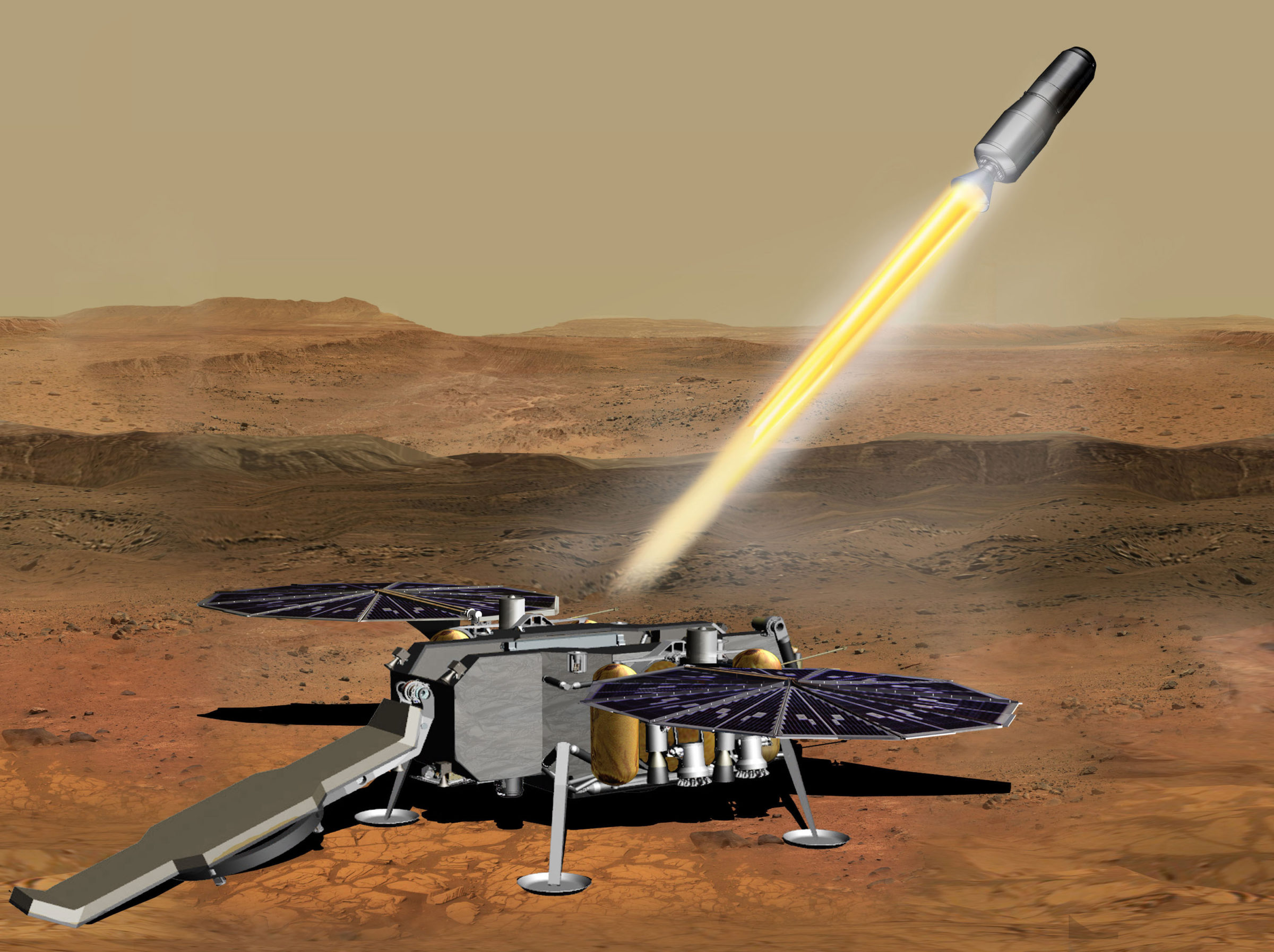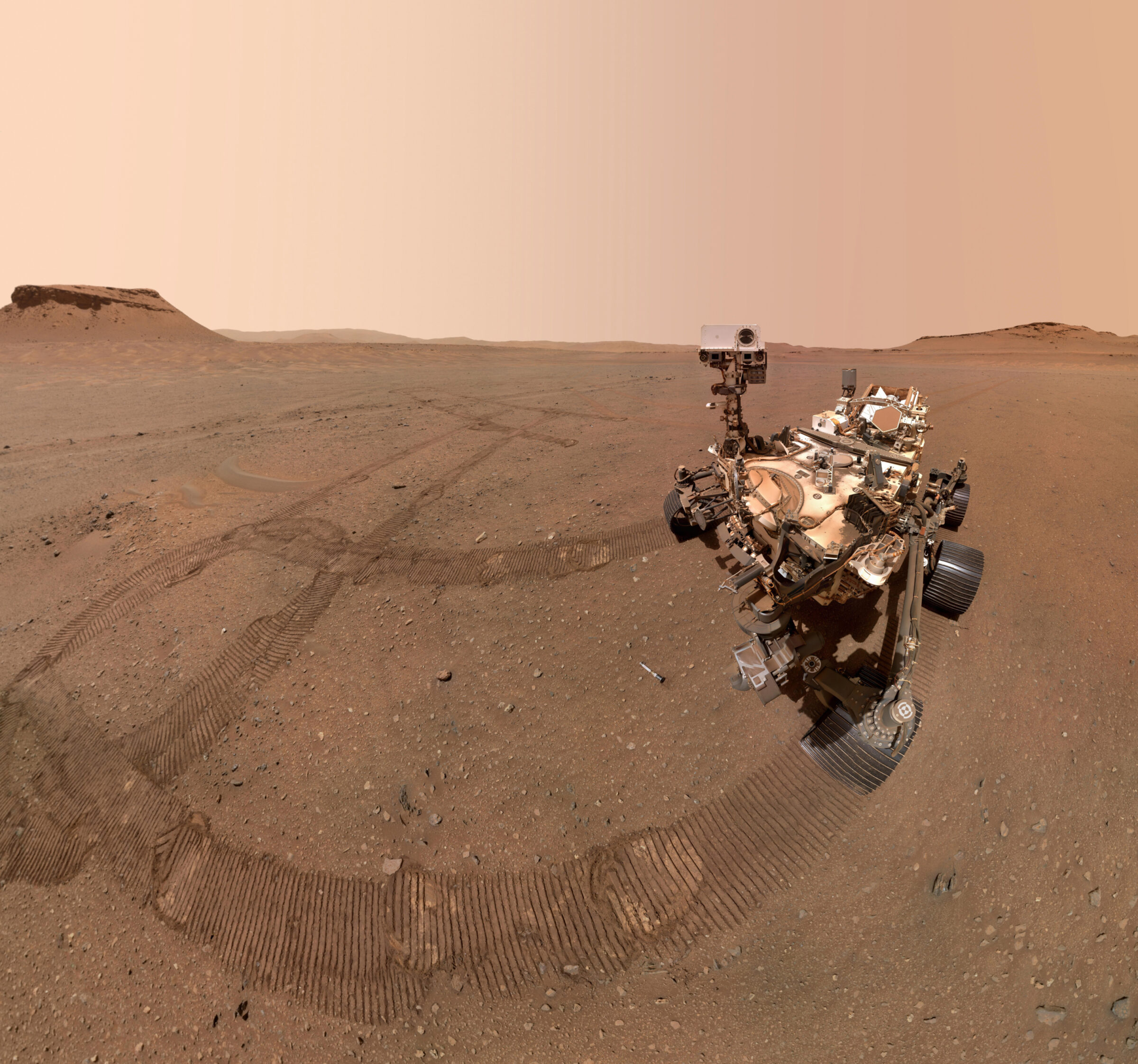The Planetary Society • Mar 05, 2024
The science value of Mars Sample Return
Humanity is poised to take a giant leap forward in what we know about Mars, Earth, and the prospect of life on another planet.
Mars Sample Return is a joint project between NASA and the European Space Agency to collect samples of rock, soil, and atmospheric gases from Mars and bring them to Earth.
The project is already underway. Right now, NASA’s Perseverance rover is collecting samples in Jezero Crater, where a river once spilled into an ancient lake. The rover has already filled more than half of the small sample tubes it brought to Mars with lake sediments and water-altered lavas.
Getting the samples back to Earth will require two additional missions. A Mars lander will collect the samples and launch them into orbit, where another spacecraft will collect them and ship them back to Earth.
The ambitious plan is the outcome of years of community effort in establishing the science case for Mars Sample Return and determining the right samples to bring back. Mars Sample Return has been the top priority of the past two decadal surveys, which are produced every 10 years to outline the priorities of the U.S. planetary science community.
But Mars Sample Return is in danger. In 2023, an independent review found that the mission was growing in cost and significantly increasing in cost. In response, the U.S. Senate threatened to cancel MSR. Congress ultimately backed off from the cancellation threat, significantly reducing funding while NASA replanned the project.
The Planetary Society supports replanning according to a few key principles. MSR is worth doing; it is arguably the most ambitious scientific endeavor of our time — one that has the potential to transform our understanding of the Solar System and provide evidence of life beyond Earth. Here’s why Mars Sample Return is so important.

There’s better equipment on Earth
For all the wonders robotic space missions have to offer, they are limited by mass, power, and size requirements. We can’t carry all our large, precise laboratory equipment to space. That limits us when we want to precisely know a rock’s age, the conditions in which it formed, and whether it carries signatures of past life, said Jeffrey Johnson, a planetary geologist at the Johns Hopkins University Applied Physics Laboratory.
“Many Martian science objectives can only be achieved by analyzing returned samples in laboratories on Earth,” he said. “The sophisticated instruments at such facilities can detect subtle chemical, mineralogical, and morphological signatures with greater precision and accuracy than is possible with miniaturized robotic instruments on the Martian surface.”
Whereas a single spacecraft instrument tends to be designed for one particular function, the samples we return from Mars can be subjected to the full range of current and future scientific tools available on Earth.
“It’s not that we can’t miniaturize and flight-harden one instrument, it’s that we can’t do it for all the instruments and analyses that we’d be able to perform on these rocks once they’re returned to Earth,” said Amy Williams, an assistant professor in geological sciences at the University of Florida.
Many important analytical tests performed on rock and soil samples require careful preparation using fluids or slicing at ultrafine, nanometer scales. That just can’t happen on Mars. Nor can we bring to Mars the full range of equipment found in a single geosciences department, let alone the scope of advanced laboratories around the Earth. With returned samples, multiple labs will work together to validate, verify, and confirm key findings — multiple lines of evidence for, and confidence in, important scientific discoveries. This level of certainty and reproducibility is critical for bombshell results such as a possible sign of past life.
We may find life
Perseverance is exploring a delta in Jezero Crater, formed by rocks and sediment where a river once flowed into an ancient lake. Deltas are good at trapping and preserving signs of life but their rocks are too fragile to survive a trip as a Mars meteorite to Earth. The samples already stored in Perseverance’s belly contain materials such as carbonates, silica, phosphate, and perhaps even organics, which are known for storing signs of life and records of an area’s past environment.
All we have to do is get them back to Earth.
“We are now on the cusp of obtaining samples that might be able to answer the fundamental question of whether we are alone in the universe,” Williams said. “We will be able to interrogate these samples with the finest cutting-edge modern techniques to search for evidence of ancient life.”

We’ll learn about Mars
Right now, our best age data on Mars rocks comes from Martian meteorites that found their way to Earth after being blasted off the Red Planet by an impact. Unfortunately, we don’t know where these rocks originated on Mars, and the rocks themselves have been severely altered by the impact and millions of years of interplanetary transit. The carefully selected and protected samples we return from Mars will allow scientists to pin down precise ages and a detailed history for specific locations on the planet; in the case of Jezero Crater, a watery location.
“This information is critical to constraining when water flowed on Mars and whether it was at a comparable time to the origin of life on Earth,” said Williams.
High-resolution studies of the samples will help us piece together the history of Jezero Crater and learn about the processes that were happening on its surface long ago, including the massive changes in Mars’ climate that ultimately changed an “ocean world” into the dry desert planet it is today.
“In particular, such measurements would give us a more precise idea of the compositions and temperatures of the fluids that interacted with the rocks,” Johnson said. “That will teach us about the conditions and durations under which alteration minerals such as clays and salts formed.”
We’ll learn about ourselves
Life arose on Earth about 3.5 billion years ago. Weather and geologic activity have reshaped and erased most of the rock evidence from that era, but on Mars, rocks that old are readily available. By studying them, we’ll learn what conditions were like in the Solar System when life arose on Earth. Was the surface continually bombarded by huge impacts or mostly quiet? How active was the sun with solar flares? How strong was the planetary magnetic field shielding Mars and when did it turn off?
“These samples have the potential to fundamentally change our understanding of the Solar System, the formation and evolution of the inner rocky planets, how other Solar Systems and extrasolar planets form and evolve, and even our perception of our place in the Universe,” Williams said.
Knowing the precise age of Mars rocks in a specific location will also allow us to update crater-counting models calibrated so far only on the Moon — but that are used to estimate the surface ages of all other worlds. Adding age data from Martian samples will help us refine and improve our knowledge of the timing of major events in Solar System history across all planets.
We’re investing in the future
Unlike Mars rocks studied by a space mission with a finite lifespan, samples returned to Earth can be preserved for the new generations of scientists. In the future, we will have new questions that the samples can answer and new technologies to study them in ways we can’t fathom today.
“As future laboratory instruments are developed, the samples will represent ‘the gift that keeps on giving,’” said Johnson.
As an example, scientists initially concluded that rocks brought back from the Moon by Apollo astronauts were devoid of water. However, studies since then have found signs of water in Moon rocks, while orbiting spacecraft have detected water ice in permanently shadowed craters near the south pole.
Mars Sample Return is expensive and challenging, but the science it delivers will be worth it. The investments we make in the program today will pay dividends to the explorers of tomorrow.
“These are the next generation that will enter into science, math, and engineering careers to explore extrasolar planets, put boots on the ground on Mars, and maybe even discover extant life on another world,” said Williams. “We are on the cusp of a scientific revolution for ourselves and our posterity with the return of these samples from Mars.”
Support our core enterprises
Your support powers our mission to explore worlds, find life, and defend Earth. You make all the difference when you make a gift. Give today!
Donate

 Explore Worlds
Explore Worlds Find Life
Find Life Defend Earth
Defend Earth

